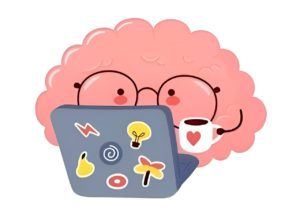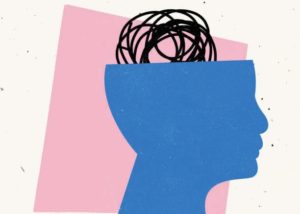- Home
- /
- Lifestyle
- /
- Psychology
- /
- Bad Habits: Breaking the...
- /
- Bad Habits and Healthy...
- 1. The Anatomy of Bad Habits in Healthy Lifestyle
- 2. What difference between addiction and bad habit?
- 3. The Psychology Behind Bad Habits
- 4. Habits against health and well-being
- 5. Bad habits agin Productivity and Achievement
- 6. Bad habits in Interpersonal Relationships: Is it about you?
- 7. How it may concern of Mental and Emotional Well-being
- 8. The Ripple Effect of Bad Habits
- 9. Strategies for Breaking Free from Bad Habits
- 10. The Journey to Lasting Change
Human behavior is a complex interplay of conscious decisions and unconscious impulses. Among these behaviors, habits hold a significant place. Habits are the autopilot responses that guide us through our daily lives. While good habits can propel us toward success, bad habits can be insidious, subtly undermining our well-being, relationships, and goals. This article delves us into the intricate world of bad habits and healthy lifestyle, exploring their origins, the psychological mechanisms behind them, their consequences, and effective strategies to break free from their grasp.
1. The Anatomy of Bad Habits in Healthy Lifestyle
Bad habits are like well-worn paths in our minds, developed through repetition and reinforcement. They often arise from a combination of triggers, routines, and rewards. A trigger is the cue that initiates the habit, the routine is the habitual behavior itself, and the reward is the gratification experienced afterward. Understanding this loop is essential to comprehending how bad habits form and persist.
2. What difference between addiction and bad habit?
Certainly, understanding the difference between bad habits and addiction is crucial as it informs the approach to breaking them.
Bad habits are repetitive behaviors that have negative consequences but may not necessarily result in dependency or loss of control. These habits can be changed with relative effort and often require self-awareness and determination. Examples include nail-biting, procrastination, or excessive phone use.
Addiction, on the other hand, is a more severe and complex condition. It involves a compulsive and uncontrollable engagement with a substance, behavior, or activity, despite adverse consequences. Addiction often alters brain chemistry and can lead to physical and psychological dependence. Overcoming addiction typically requires professional intervention, structured treatment plans, and ongoing support. Examples of addiction include substance abuse (like drugs or alcohol) and behavioral addictions (like gambling or internet gaming disorder).
While both bad habits and addiction can be detrimental to one’s well-being, the distinction lies in the severity, compulsiveness, and dependency associated with addiction, making it a more formidable challenge to overcome.
3. The Psychology Behind Bad Habits
Instant Gratification vs. Long-Term Benefits
One of the main reasons bad habits are so enticing is that they offer immediate pleasure or relief, often overshadowing the long-term negative consequences. This tension between short-term reward and long-term impact is at the core of why bad habits are hard to break.
Habitual Loop and the Brain
Neurologically, habits are deeply ingrained in the brain’s basal ganglia, making them automatic and less dependent on conscious decision-making. Over time, this automatization can make bad habits seem almost instinctive.
Emotional Connection
Many bad habits are linked to emotions. People might turn to comfort eating, smoking, or excessive social media use as a way to cope with stress, sadness, or boredom. These habits provide temporary relief but often exacerbate the underlying emotional issues.
About habits formation read in this article: The Science of Healthy Habits Formation
4. Habits against health and well-being
Bad habits, those seemingly innocuous routines we fall into, have a far-reaching impact on our lives. Among the myriad consequences they bring about, perhaps the most significant is their effect on our health and overall well-being. In this exploration, we will unveil the hidden connections between bad habits and our physical and mental well-being, highlighting the urgency of breaking free from these insidious patterns.
4.1. The Toll on Physical Health
1. Smoking: One of the most well-known bad habits, smoking, is a primary cause of preventable diseases, including lung cancer, heart disease, and respiratory disorders. It not only shortens lives but diminishes the quality of those remaining years.
2. Overeating and Poor Diet: Excessive consumption of unhealthy foods, driven by bad eating habits, leads to obesity, diabetes, cardiovascular issues, and a host of other health problems. The negative impact extends beyond the physical, as poor nutrition can also affect mental health.
3. Lack of Exercise: A sedentary lifestyle is often the result of bad habits like procrastination and prioritizing leisure over physical activity. This contributes to obesity, muscle weakness, and a higher risk of chronic diseases.
4. Excessive Alcohol Consumption: Overindulgence in alcohol can damage the liver, heart, and brain. It’s a leading cause of accidents and injuries, with long-term use increasing the risk of addiction and mental health disorders.
More about alcohol and its influence on body read here: Alcohol and Healthy Life Style: The Impact on the Body
4.2. The Psychological Price
1. Stress and Anxiety: Many bad habits, such as nail-biting or excessive worrying, are rooted in anxiety. These behaviors not only maintain stress but can intensify it over time.
2. Depression: A cycle of negative thinking and self-criticism often accompanies bad habits. This can lead to depression, where individuals feel trapped by their habits and lose hope of change.
3. Low Self-Esteem: Bad habits erode self-esteem as individuals feel incapable of breaking free from them. This negative self-image can infiltrate all aspects of life, from personal relationships to career progression.
4. Isolation: Certain bad habits, like excessive screen time or substance abuse, can lead to social isolation. This exacerbates feelings of loneliness and detachment from support networks.
5. Bad habits agin Productivity and Achievement
In the pursuit of success and personal growth, productivity and achievement are two cornerstones. Yet, lurking in the shadows are bad habits that can silently sabotage our progress. This article explores the insidious ways in which bad habits impact productivity and achievement, uncovering the intricate connection between our daily routines and our aspirations.
5.1. Procrastination: The Time Thief
One of the most notorious bad habits in the realm of productivity is procrastination. It’s the art of delaying tasks, usually in favor of more immediate, less important activities. Procrastination robs us of precious time, hindering our ability to complete projects, meet deadlines, and ultimately, achieve our goals.
1. Instant Gratification: Procrastination often involves choosing short-term pleasures (e.g., social media or entertainment) over long-term gains (e.g., completing a work assignment). The instant gratification of these diversions can be addictive.
2. Mounting Stress: As deadlines approach, the stress and anxiety caused by procrastination can become overwhelming. This stress further impairs cognitive function and decision-making, perpetuating the cycle of procrastination.
3. Missed Opportunities: Procrastination isn’t just about delaying work; it’s about missing opportunities for growth and achievement. It’s the projects left unfinished, the ideas left unexplored, and the potential left untapped.
5.2. Disorganization: Chaos in the Workplace
Disorganization is another bad habit that wreaks havoc on productivity and achievement. When your workspace is cluttered, your mind follows suit, making it difficult to focus, plan, and execute tasks efficiently.
1. Time Wasted Searching: Disorganization often leads to valuable time wasted searching for lost items or documents. This can impede workflow and hinder the completion of tasks.
2. Impaired Decision-Making: A cluttered environment can lead to decision fatigue, making it harder to prioritize tasks and make informed choices about where to invest your time and energy.
3. Reduced Creativity: A chaotic workspace can stifle creativity and innovation. Clearing the clutter can open up mental space for fresh ideas and solutions.
5.3. Multitasking: The Illusion of Efficiency
In today’s fast-paced world, multitasking is often touted as a valuable skill. However, it can easily become a bad habit that hampers productivity and achievement.
1. Reduced Quality: Multitasking typically results in reduced quality of work as attention is divided among multiple tasks. This can lead to errors, missed details, and rework.
2. Increased Stress: Constantly juggling tasks can increase stress levels and lead to burnout. It also makes it challenging to fully engage with any one task, hindering progress.
3. Longer Completion Times: Contrary to the belief that multitasking speeds things up, it often leads to longer completion times due to the time lost in switching between tasks.
5.4. Perfectionism: What is bad in it?
While the pursuit of excellence is admirable, perfectionism taken to an extreme can become a paralyzing bad habit.
1. Endless Revisions: Perfectionists often spend excessive time on small details and revisions, delaying project completion.
2. Fear of Failure: The fear of not meeting impossibly high standards can prevent taking risks and seizing opportunities, stunting personal and professional growth.
3. Diminished Self-Esteem: When perfection is elusive, it can lead to diminished self-esteem, self-criticism, and a lack of confidence.
Productivity and achievement are within reach, but the journey is often impeded by bad habits that undermine our efforts. Recognizing these habits and actively working to break free from them is a critical step toward unlocking our full potential. By reevaluating our daily routines and embracing positive change, we can steer clear of the shackles of underachievement and embark on a path to success and fulfillment.
6. Bad habits in Interpersonal Relationships: Is it about you?
Interpersonal relationships form the very fabric of our lives, contributing profoundly to our emotional well-being and overall satisfaction. However, amidst the tapestry of connections we create, bad habits can weave in threads of discord and tension, slowly unraveling the bonds we cherish. This article explores the intricate ways in which bad habits affect interpersonal relationships, offering insights into how we can mend and strengthen these vital connections.
6.1. The Impact on Communication
Effective communication is the cornerstone of healthy relationships. Bad habits can severely hamper this vital skill, leading to misunderstandings, conflicts, and emotional distance.
1. Interrupting and Not Listening: Habitually interrupting others or failing to truly listen can convey a lack of respect and empathy, hindering productive conversations.
2. Excessive Criticism: Constantly criticizing or nitpicking can erode trust and lead to defensiveness in the other person.
3. Passive-Aggressiveness: Using indirect or passive-aggressive communication can create confusion and escalate conflicts.
6.2. The Erosion of Trust
Trust is the bedrock upon which strong relationships are built. Bad habits can erode trust, making it difficult to establish or maintain meaningful connections.
1. Dishonesty: Lying, even about small matters, can erode trust over time, making it difficult for others to rely on your word.
2. Broken Promises: Failing to follow through on commitments can lead to disappointment and a loss of trust.
3. Betrayal of Confidence: Sharing sensitive information shared in confidence with others can shatter trust and lead to feelings of betrayal.
6.3. Time Management and Prioritization
Balancing relationships with other demands is a constant challenge. Bad habits related to time management and priorities can lead to neglecting important relationships.
1. Chronic Lateness: Habitual lateness signals a lack of respect for others’ time and can cause frustration and resentment.
2. Overcommitment: Overextending oneself can lead to exhaustion and reduced availability for loved ones.
3. Excessive Screen Time: Spending too much time on screens, especially during social interactions, can create feelings of neglect and disconnection.
6.4. Coping Mechanisms and Conflict Resolution
When faced with conflict or stress, individuals often turn to coping mechanisms. Bad habits in this area can exacerbate issues rather than resolve them.
1. Avoidance: Habitual avoidance of conflict can lead to unresolved issues simmering beneath the surface.
2. Escalation: Conversely, some individuals have a habit of escalating conflicts, turning minor disagreements into major rifts.
3. Blame-Shifting: Assigning blame to others without taking personal responsibility can fuel resentment and hinder conflict resolution.
6.5. Rebuilding and Strengthening Relationships
Acknowledging and addressing bad habits that impact interpersonal relationships is the first step toward positive change. Here are strategies for mending and strengthening these vital connections:
1. Open Communication: Encourage open and honest conversations about how your habits affect your relationships. Listen actively to the feedback and concerns of others.
2. Self-Reflection: Engage in self-reflection to understand the root causes of your bad habits. Consider seeking professional guidance if necessary.
3. Set Boundaries: Establish clear boundaries to protect your time and emotional well-being. Communicate these boundaries respectfully to those you care about.
4. Apologize and Make Amends: If your bad habits have harmed relationships, apologize sincerely and take concrete steps to make amends.
5. Learn Conflict Resolution Skills: Invest in learning effective conflict resolution skills to address disagreements constructively.
Interpersonal relationships are among the most significant aspects of our lives, shaping our sense of belonging and emotional well-being. Bad habits, although they may seem small, can wield a powerful influence over these connections, potentially damaging them irreparably. Recognizing and actively addressing these habits can lead to stronger, healthier relationships, reinforcing the bonds that truly matter in our lives. Ultimately, it is through empathy, communication, and a commitment to positive change that we can mend and strengthen the ties that bind us to one another.
7. How it may concern of Mental and Emotional Well-being
In the grand tapestry of human existence, mental and emotional well-being are the vibrant threads that weave our stories. They are the very essence of what it means to be alive, experience joy, face challenges, and connect with others on a profound level. However, this intricate tapestry is vulnerable to the insidious influences of bad habits. This article unveils the complex ways in which these habits affect our mental and emotional well-being, and offers insights into how we can tend to our inner gardens for a richer and more fulfilling life.
7.1. The Emotional Rollercoaster
1. Negative Self-Talk: Habitual negative self-talk, such as self-criticism and self-doubt, can erode self-esteem and contribute to feelings of unworthiness and sadness.
2. Bottling Up Emotions: Suppressing emotions as a coping mechanism can lead to chronic stress, anxiety, and even depression. Emotions need to be acknowledged and processed to maintain emotional well-being.
3. Catastrophizing: Exaggerating problems and imagining the worst-case scenarios is a cognitive distortion that can lead to heightened anxiety and emotional distress.
7.2. The Mental Maze
1. Rumination: Constantly dwelling on past mistakes or regrets, often driven by bad habits, can keep the mind stuck in a cycle of negativity and hinder problem-solving abilities.
2. Excessive Worrying: Worrying about things that are beyond our control or obsessively can lead to anxiety disorders, making it challenging to experience peace of mind.
3. Escapism: Engaging in escapist habits like excessive gaming, substance abuse, or binge-watching TV to avoid real-life issues can lead to neglecting responsibilities and deteriorating mental health.
7.3. The Mind-Body Connection
1. Sleep Deprivation: Bad habits related to sleep, such as staying up late or using screens before bedtime, can lead to chronic sleep deprivation, which impairs cognitive function, mood regulation, and overall mental well-being.
2. Unhealthy Eating Habits: Poor nutrition, often linked to bad eating habits, can have a profound impact on mental health. A diet high in processed foods and sugar can contribute to mood swings and depression.
3. Lack of Physical Activity: A sedentary lifestyle, often a result of bad habits like procrastination or prioritizing leisure over exercise, can lead to decreased energy levels and heightened feelings of lethargy and depression.
About psychosomatic read here: The Science of Healthy Habits Formation
Mental and emotional well-being are the compasses that guide us through life’s ups and downs. They influence our resilience in the face of challenges and our ability to savor moments of joy and connection. Bad habits, though seemingly innocuous, can cast shadows on this inner landscape, diminishing our capacity for happiness and fulfillment. Recognizing and addressing these habits is an act of self-care, a commitment to nurturing our minds and souls for a brighter, more harmonious existence. In embracing positive change, we embark on a journey of self-discovery and healing, fostering the flourishing mental and emotional well-being that enriches every aspect of our lives.
8. The Ripple Effect of Bad Habits
The consequences of bad habits extend far beyond their immediate impact. They create a domino effect that affects various aspects of life:
1. Self-Esteem and Confidence: Engaging in bad habits can erode self-esteem as individuals feel out of control and unable to make positive changes.
2. Time Management: Time is a finite resource, and bad habits consume valuable time that could be spent on productive or fulfilling activities.
3. Opportunity Cost: Every moment spent on a bad habit is a missed opportunity to engage in healthier, more constructive behaviors.
4. Social Isolation: Certain bad habits, like excessive gaming or internet use, can lead to social withdrawal and isolation.
9. Strategies for Breaking Free from Bad Habits
Bad habits are like silent anchors that weigh us down, preventing us from reaching our full potential and living our best lives. Whether it’s smoking, procrastination, overeating, or any other unwanted behavior, breaking free from these habits is a journey worth undertaking. In this article, we will explore unique and effective strategies for breaking bad habits and reclaiming control over our lives.
9.1. Understand the Habit Loop
To break a habit, you must first understand its anatomy. Habits often follow a loop: cue, routine, and reward. Recognizing this loop is key to disrupting it.
1. Identify Triggers (Cues): Pay close attention to the situations, emotions, or cues that trigger your bad habit. Awareness is the first step towards change.
2. Analyze the Routine: Understand the habit itself. What do you do when you’re triggered? What is the behavior you want to change?
3. Uncover the Reward: Every habit provides a reward, even if it’s a negative one like stress relief from smoking. Identify the payoff of your bad habit, as this is what keeps it going.
9.2. Replace, Don’t Erase
Trying to eliminate a bad habit completely can be challenging. Instead, replace it with a healthier alternative:
1. Substitute the Routine: Find a behavior that provides a similar reward but is positive. For instance, replace smoking with deep breathing exercises or chewing gum.
2. Mindful Replacement: Engage in the new behavior mindfully. Focus on the experience and the reward it provides.
9.3. Implement the Two-Minute Rule
This strategy, popularized by productivity expert James Clear, suggests that you start with a habit that takes less than two minutes to do. The idea is to make it so easy that you can’t say no. Over time, you can gradually build on this habit.
9.4. Visual Cues and Habit Tracking
Visual cues can serve as powerful reminders to change behavior:
1. Habit Tracking: Use a journal or app to track your progress. Seeing the days add up can be highly motivating.
2. Visual Reminders: Place visual cues in your environment. For example, if you’re trying to eat healthier, have a bowl of fresh fruit on your kitchen counter.
9.5. Build a Support System
Share your goals with friends, family, or a support group:
1. Accountability Partner: Find someone who can hold you accountable and provide encouragement.
2. Join a Community: There are many online communities and apps dedicated to helping people break bad habits. These can provide inspiration and motivation.
9.6. Embrace Mindfulness and Meditation
Mindfulness practices can help you become more aware of your habits and provide tools for self-control:
1. Mindful Observation: Observe your cravings and urges without judgment. Mindfulness can help you distance yourself from the habit.
2. Meditation: Regular meditation can improve self-control and reduce impulsive behavior.
More about meditation read in this article: The Transformative Power of Meditation
9.7. Set SMART Goals
Use the SMART framework (Specific, Measurable, Achievable, Relevant, and Time-bound) to set clear and achievable goals for breaking your habit. Having a structured plan increases your chances of success.
9.8. Learn from Setbacks
Relapses are common on the path to breaking bad habits. Instead of viewing them as failures, consider them as opportunities to learn:
1. Analyze Triggers: Understand what led to the relapse. Was it stress, a particular environment, or an emotional trigger?
2. Adjust Your Strategy: Based on your analysis, adjust your strategy to avoid similar triggers in the future.
9.9. Celebrate Small Wins
1. Acknowledge and celebrate your victories, no matter how small they may seem. Rewarding yourself for progress can reinforce positive behavior.
2. Cultivate Self-Compassion: Be gentle with yourself. Recognize that everyone has flaws and struggles, and self-compassion is a vital component of mental and emotional well-being.
9.10. Seek Professional Help
If bad habits have led to chronic mental health issues, don’t hesitate to seek the guidance of a mental health professional. They can provide tools and strategies for recovery.
Breaking bad habits is a journey that requires patience, self-compassion, and commitment. While it may not always be easy, the rewards of living a life free from the shackles of unwanted behaviors are immeasurable. By understanding the habit loop, replacing routines, and employing these unique strategies, you can take control of your life, break free from your bad habits, and pave the way for a brighter and more fulfilling future. Remember, change is possible, and every step in the right direction is a victory worth celebrating.
10. The Journey to Lasting Change
Breaking free from bad habits is not a linear process. Relapses are common, but they don’t signify failure. Instead, they offer a chance to learn from setbacks and refine strategies. The journey to lasting change is marked by perseverance, self-compassion, and the understanding that change takes time.
Bad habits might be deeply ingrained, but they are not insurmountable. With the right knowledge, mindset, and strategies, individuals can reclaim control over their behaviors and live more intentionally. By unraveling the psychology behind bad habits, acknowledging their consequences, and actively working toward positive change, we can break the chains that hold us back and step into a brighter, habit-free future.
































































0 Comments